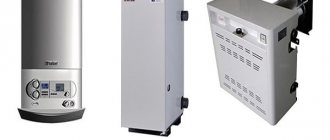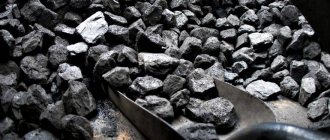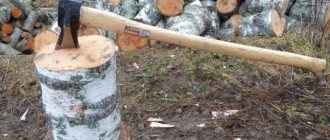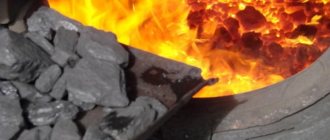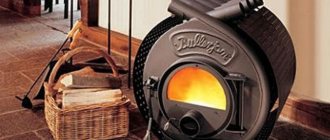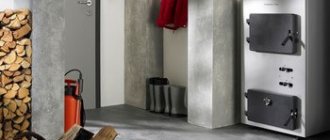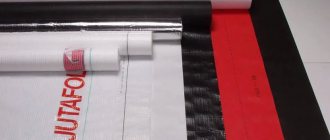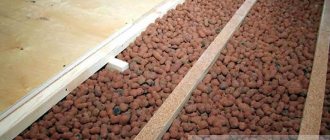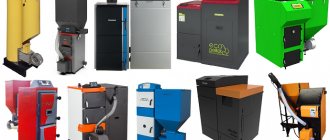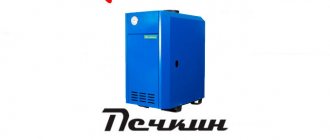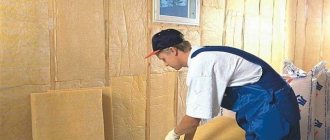Coal is divided into grades, groups and subgroups within the industrial classification. It is based on the properties of minerals to react differently to high temperatures. It also takes into account the stage of metamorphism or coalification. The higher it is, the more mature the mineral is. Well carbonized grades produce more heat, less smoke and ash.
In 1988, the classification by brand was agreed upon with the International Codification System.
In this section we will explain in detail:
- What brands of coal exist?
- According to what characteristics coal is divided into grades
- How are brands, groups, subgroups, classes, categories, types and subtypes of coal related?
Types of coal for barbecue
In retail outlets you can find charcoal in containers of different weights from various manufacturers.
Visually, all coal looks exactly the same. But in fact, its properties depend on the type of wood. When cooking over a fire, it is recommended to choose the following types of coal:
Birch
Lights up easily and provides even, long-lasting heat.
Does not emit toxic substances and does not impart any flavor to products. Average consumption per 1 kg of meat is 4 kg.
Oak
Does not emit harmful substances or unpleasant odors.
Gives a large amount of sustained heat. However, it does not light well.
Coconut
Coal from a nut shell. This is one of the best options for grilling meat. Coal flares up quickly, does not produce soot, and holds heat for a long time and evenly.
The only disadvantage of spit coal is its high cost.
Wood briquettes
This type of fuel is easier to ignite. To make briquettes, manufacturers use birch, oak, larch, and aspen chips.
The price is higher than coal. But the consumption is about 2 times less.
How to determine ash content?
The most important characteristic of coal is ash content - the percentage of non-combustible residue (ash) formed from the mineral impurities of the fuel after its complete combustion. Taking into account the ash content, methods have been developed to assess the efficiency of coal enrichment, and fuel prices are also formed.
Ash content is measured as a percentage of the total mass of coal. The higher it is, the lower the calorific value and, accordingly, the quality of coal. Therefore, it is the ash content of coal that determines its suitability for use as fuel. Thus, coal with 25% ash content is classified as high-grade, while coal with an ash content of 40% or more is considered low-grade.
Determination of the ash content of coal is carried out using one standard method: the fuel is completely burned, then the ash residue is calcined to a constant mass and its share is directly determined relative to the initial mass of the fuel.
When coal is burned, several stages pass through the process of converting mineral components into ash. All reactions occur at different rates and under different temperature conditions. The mass and composition of the resulting ash varies in each individual ashing process, so it is impossible to accurately determine the ash content of each type of coal separately.
The same can be said about the other properties of hard coal, brown coal or anthracite: they are determined by a number of factors, so only average parameters are taken as a basis.
Which coal should you not take?
If the package says “Charcoal”, the buyer may be in for an unpleasant surprise. Unscrupulous producers may place pine or aspen in bags instead of birch. This is lower quality wood that burns out quickly and does not produce the required amount of heat. Pine produces resin, which gives the meat an unpleasant bitter taste.
Birch charcoal
Pine charcoal
You can recognize a fake by the appearance of the coals. Birch has a rich black color and a shiny surface. The pine is matte and slightly grayish. It is better to choose packages in the store that clearly indicate “Birch charcoal”.
Carefully! You cannot cook shish kebab on coal. It contains toxic substances that penetrate into meat and can be harmful to health.
What is the best type of coal?
anthracites, from other Greek. ἄνθραξ “coal; carbuncle") is the oldest of fossil coals, coal with the highest degree of carbonization (metamorphism). The best grade of coal, distinguished by its black color, strong shine, and high calorific value.
Interesting materials:
Where in Russia are potassium salts mainly mined? Where in Russia are vipers found? Where in Russia is lamprey found? Where did they first start extracting oil in Russia? Where is Nissan Terrano produced in Russia? Where in Russia is baking soda produced? Where are cows raised in Russia? Where is sea buckthorn grown in Russia? Where in Russia are yellow watermelons grown? Where in Russia do most Armenians live?
Criterias of choice
In addition to the type of wood, several other parameters need to be taken into account when selecting coal:
- Size of pieces. The pack, as a rule, contains pieces of medium and small sizes. On the one hand, this is a plus. After all, such coal flares up quickly, and you can start cooking earlier. But on the other hand, this is a disadvantage, since small pieces do not produce enough heat.
Expert opinion
Alexey Gavrilov
BBQ kitchen and equipment specialist
It is better to purchase coal consisting of large pieces. It is best to purchase packages that indicate the type of wood and the inscription “calibrated.” It means that the pieces are the same, even, and therefore will maintain a uniform temperature.
- Weight of packing. The higher it is, the lower the cost of coal.
- Best before date. Coal has a guaranteed shelf life. Expired products may be damp. Such coal will not burn, but will smolder and emit smoke. You won't be able to fry a shish kebab on it.
Choosing a type of solid fuel for heating
Now let's talk about how to choose coal for heating a private home. Anthracite is best suited for heating a large individual building. This fuel has minimal consumption with maximum heat transfer, burns evenly and for a long time, and does not leave a lot of residue. Another advantage of using this fuel is that it does not clog the chimney, facilitating longer operation of the system.
The disadvantages of using anthracite are its high cost and difficult ignition. To reduce the cost of purchasing fuel, you can buy a long-flame variety. This type is suitable for use in any heating equipment that runs on solid fuel. Long-flame coal ignites easily and quickly, burns well and for a long time. One bookmark is enough for 10-12 hours of equipment operation. For good combustion, minimal airflow is ensured.
The best brands
When purchasing finished coal, you can rely on the name of the manufacturer. According to customer reviews, the following brands of coal are recognized:
- Supergrill. Birch charcoal in bags from 3 to 10 kg. The pieces are large and hold the heat for a long time. The packaging contains minimal dust content.
- Weber. High quality hardwood lump charcoal. Lights up easily and holds the heat well. During combustion, it does not form an unpleasant odor, and smoke does not emit dangerous compounds.
- Every day. A distinctive feature of the product of this brand is the combination of low price with acceptable quality. Coal flares up quickly and smolders for a long time. The disadvantage of the brand is the presence of too large pieces and a large amount of dust in the packaging.
- SevZapUgol. High-quality coal that does not produce soot. Lights up quickly. The disadvantage of the brand is a large amount of dust in the packaging.
- Palisad Camping. High quality charcoal with high heat output. Lights up easily and releases heat slowly.
Pros and cons of heating with coal
Coal for heating has the following advantages:
- After one addition to the boiler, this fuel burns for 10-12 hours.
- Good heat dissipation. This indicator may differ slightly for coal of a certain fraction and variety.
- This is a universal type of fuel that can be used in various heating devices (portable stoves or stationary boilers).
- The reasonable price of fuel is another advantage.
- Coal is easy to transport and store.
- To operate this type of fuel, you do not need to build a gas pipeline or connect other networks to the unit.
- Coal has a high heat capacity, which additionally helps maintain the air temperature in the room.
- To heat a room, a minimum portion of solid fuel is sufficient, because it has good heat transfer.
The disadvantages of using coal to generate heat for the purpose of heating the coolant are the need for human participation to put fuel into the boiler or furnace. This disadvantage is solved by using automatic feeding systems. After combustion of this type of fuel, ash accumulates in the boiler, which must be cleaned out regularly. Coal can only be stored in a dry place. In order for fuel to burn efficiently, it is important to have draft in the chimney. You will also need wood chips or firewood to ignite fuel.
Product rating
Weber Coal briquettes, 8 kg ★4.9
Weber briquettes are made from high quality compressed coal. The binding element in this fuel is corn starch. Thanks to its completely natural composition, this product has received the FSC Mix eco-label.
Buyers characterize these coal briquettes as very economical. If you can shut off the air supply in a grill or barbecue using dampers or a lid, the briquettes will go out and the pieces that are not completely burned can be reused.
From scratch, this fuel ignites in 20 minutes. An excellent option for those who often cook on the grill, grill or barbecue.
Average user rating: 4.9
Product characteristics
- Composition: hardwood, corn starch.
- Packaging: package.
- The weight of the fuel in the package is 8 kg.
- Burning time - 3 hours.
pros
- Can be reused.
- Holds the heat for a long time.
- No coal dust.
- The plastic bag with a zip-lock fastener is hermetically sealed and does not allow moisture to pass through, and can be stored for a long time.
Minuses
- High price.
What Yandex Market can offer us:
Grillkoff Birch charcoal for grilling “Standard”, 5 kg ★4.8
Classic birch coals produced under another popular brand. The product received mostly positive user reviews due to the high quality of the fuel, the low amount of dust in the packaging and the ability to maintain even heat for a long time.
The coals light up quickly and smolder evenly. A good option for those looking for high-quality fuel at an affordable price.
Average user rating: 4.8
Product characteristics
- Composition: birch.
- Packaging: package.
- The weight of the fuel in the package is 5 kg.
pros
- Large packaging.
- Lights up well.
- Little dust.
- Burns evenly.
- Holds heat well.
Minuses
- Pieces of different sizes, not calibrated. You may end up with a bag of very small pieces.
What Yandex Market can offer us:
SuperGrill Selected birch charcoal XXL, 8 kg ★4.8
This fuel is an excellent example of the optimal price-quality ratio. As customers note, SuperGrill XXL coals flare up quickly in any weather, especially if you light them in the starter.
Coal is consumed rather slowly; for some users, one package was enough for 6-7 grill kindlings.
Average user rating: 4.8
Product characteristics
- Composition: birch.
- Packaging: package.
- The weight of the fuel in the package is 8 kg.
pros
- Packaging with protective coating against moisture.
- It flares up quickly.
- Holds heat well.
- There are no too small pieces or dust.
- It lasts a long time.
Minuses
- Some users noted uneven fuel burning.
What Yandex Market can offer us:
CHAPTER HEAT charcoal briquettes 10 kg ★4.8
According to the manufacturer, 1 kg of these briquettes will replace 3 kg of conventional coal. This fuel is designed for 4-5 hours of uniform, stable smoldering.
High-quality raw materials are pressed at high temperatures without the use of chemical binders. Thanks to this, domestic briquettes GLAV ZHAR can be safely called an environmentally friendly product.
Many users call it an excellent alternative to more expensive Weber briquettes, since the manufacturer provides high quality fuel at an affordable price.
Average user rating: 4.8
Product characteristics
- Composition: compressed charcoal of category A1 (fine fraction).
- Packaging: package.
- The weight of the fuel in the package is 10 kg.
pros
- The coals burn quickly.
- The fuel holds heat for a long time.
- High quality briquettes, minimal amount of dust.
- Can be reused, the main thing is to thoroughly dry the coals after extinguishing with water.
Minuses
- Sometimes there are too large pieces of coal.
What Yandex Market can offer us:
SMART BBQ coconut charcoal, 2 kg ★4.6
The unique difference of this fuel lies not only in the raw materials chosen for the production of coal, but also in the packaging. A bamboo box can easily replace a starter, and in general will simplify the process of lighting a barbecue or grill.
To light the firebox, just place the entire structure in the package at the bottom of the roaster and light the cardboard wick. In 10-12 minutes you will receive ready-made coals that will maintain even heat for 4 hours.
Customers who tried SMART BBQ coconut coals in action reacted very favorably to them. If you don’t want to take a large bag of coals with you to the countryside or to the dacha and deal with excess dust, this fuel is definitely for you.
Average user rating: 4.6
Product characteristics
- Ingredients: coconut shell.
- Packaging: bamboo box.
- Fuel weight - 2 kg.
pros
- Simple ignition “with one match”.
- Does not catch fire from fat.
- Economical fuel with virtually no waste.
- Eco-friendly product without chemical impregnations.
- The coals provide even heat and burn for a long time.
Minuses
- In a deep grill, you may need a grate so that the coals are not too far from the meat, or you will have to add other coal or briquettes.
What Yandex Market can offer us:
Weber Coal briquettes “Long Lasting”, 2.5 kg ★4.6
High quality fuel made from charcoal and corn starch. Eco-friendly, efficient and economical. These briquettes will burn steadily for at least a couple of hours.
As users note, in practice, this fuel maintains stable heat for up to 4 hours in a row.
Average user rating: 4.6
Product characteristics
- Ingredients: hardwood charcoal and corn starch.
- Packaging: package.
- Fuel weight - 2.5 kg.
pros
- Can be reused.
- No dust or dust.
- Holds the heat for a long time.
- Eco-friendly fuel.
Minuses
- Price.
What Yandex Market can offer us:
Brown coal is a cheap fuel and contains a lot of water (39%), has a low calorific value, contains a lot of quickly evaporating gases (up to 50%) and as a fuel for a stove, fireplace, boiler, etc., brown coal is poor, similar to firebox with raw wood. Anyone who has fired a stove knows how difficult it is to flare up, smoke and produce a lot of ash and moisture, which spoils the bricks of the firebox and chimney. After several months of storage in damp conditions, brown coal may stop igniting altogether.
Coal is a much better fuel. Coal is a hard rock of black color with a shiny semi-matte or matte surface. Coal contains only 5-6% moisture and therefore has a high calorific value and ignites well. Burning a kilogram of coal allows you to get 6.59 kW-hours, and this already brings coal closer to the calorific value of petroleum products, and in comparison with birch, alder and oak firewood, the amount of coal burned produces almost 3.5 times more heat. Coal also has its disadvantages - it produces more ash and even slag. Large coal miners in Russia are the Kuznetsk, Pechersk and Karaganda coal basins. The quality of the coal from these developers is almost the same.
Coal is classified according to many parameters (geography of extraction, chemical composition), but from a “everyday” point of view, when buying coal for use in furnaces, it is enough to understand the labeling.
Based on the degree of coalification, there are three types of coal: brown, hard and anthracite. The following coal designation system is used: Grade = (grade) + (size class).
| Types of coal | Designation | |
| Brown | B | |
| Stone | ||
| Long flame | D | |
| Gas | G | |
| Fat | AND | |
| Coke | TO | |
| Lean-sintering | OS | |
| Low-caking | SS | |
| Skinny | T | |
| Anthracite | A | |
In addition to the main grades given in the table, intermediate grades of coal are also distinguished: DG (long-flame gas), GZh (gas fatty), KZh (coke fatty), PA (semi-anthracite), brown coals are also divided into groups.
Coking grades of coal (G, coke, Zh, K, OS) are practically not used in thermal power engineering, since they are a scarce raw material for the coke-chemical industry.
According to the size class (size of pieces, fractions), graded coal is divided into:
| Name | Designation | Size |
| Slab | P | More than 100 mm |
| Large | TO | 50 - 100 mm |
| Nut | ABOUT | 26 - 50 mm |
| Small | M | 13 - 25 mm |
| seed | WITH | 6 - 13 mm |
| Shtyb | Sh | Less than 6mm |
| Private | R | Not limited by size |
In addition to graded coal, there are combined fractions and screenings available for sale (PK, KO, OM, MS, SSh, MSSh, OMSSh). The size of coal is determined based on the smaller value of the finest fraction and the larger value of the largest fraction indicated in the name of the coal grade. For example, the OM fraction (M – 13-25, O – 25-50) is 13-50 mm.
| Type of coal | Specific heat of combustion | |
| kJ/kg | Kcal/kg | |
| Brown | 14 700 | 3 500 |
| Stone | 29 300 | 7 000 |
| Anthracite | 31 000 | 7 400 |
These figures refer to coal concentrate. Actual figures may vary significantly. Thus, for ordinary Kuzbass hard coal, which can be bought at coal warehouses, the value indicated is 5000-5500 kcal/kg. We use 5300 kcal/kg in our calculations.
The density of coal is from 1 to 1.7 (hard coal - 1.3-1.4) g/cm3, depending on the type and content of mineral substances. In technology, “bulk density” is also used; it is about 800-1,000 kg/m3.
How to light coal?
There are several ways to light charcoal in a barbecue.
Each has its own characteristics:
Newspaper
Thin sheets flare up quickly and do not emit harmful substances. Instead of newspapers, you can use wrapping paper, old notebooks and magazines.
Only the sheets should not be glossy. They contain special additives, so they burn poorly.
Birch bark and wood chips
Stock up on a handful of dry birch bark in advance and chop thin wood chips, preferably birch. To light, crumple up a few pieces of paper and place them on the bottom of the grill.
Cover them with wood chips and birch bark, and place several medium-sized pieces of charcoal on top. Set the structure on fire.
Starter
This is a special and very effective device for lighting a barbecue. It is a metal mug with holes on the walls for blowing.
A draft appears inside the starter, which “inflates” the coal lying on the grate in its lower part.
Lighter fluid
The product will help light the grill even in damp weather. The liquid is made on the basis of paraffins, burns out completely and does not affect the taste and smell of products. Some gourmets claim that lighter fluid still gives the meat an unpleasant odor.
But this phenomenon is most likely due to too generous watering of coal. If the product is used sparingly, it will have time to burn out before the food is placed on the grill.
Briquettes for ignition
The basis of special ready-made briquettes is wood chips impregnated with paraffin. This product is sold in the form of small tiles.
They ignite easily and produce a steady flame for 5 - 7 minutes. This is enough to make the coals in the grill glow.
Gas-burner
A special nozzle for gas cartridges is actively used by lovers of outdoor recreation.
It gives a strong flame and helps to start a fire even in rainy weather.
Advice! In damp weather, place small chips or birch bark under the pile of coal for quick ignition. Direct the burner flame towards this substrate.
Choosing the right coal and following the technology for lighting it will help you prepare delicious dishes on the grill and give you a lot of pleasant impressions from outdoor recreation.
Design of a coal boiler for heating a private house
In many models of such devices, in addition to those recommended by the manufacturer, the use of other types of fuel (wood, briquettes, peat) is allowed.
This equipment consists of the following functional elements:
- firebox - a chamber for burning fuel;
- ash pan - a container under the firebox for collecting combustion products;
- grate - a grate that prevents coal from falling into the ash pan;
- heat exchanger - a system in which coolant circulates;
- chimney - a channel for smoke removal;
- and temperature control systems .
How to get maximum benefit?
In order for fuel to retain its calorific value, it must be stored properly. Although it is profitable to purchase coal in large quantities, you should not do this for several years in advance. The most unstable to storage is brown , it will last up to six months , anthracite has the longest shelf life of up to one and a half years.
To store coal, choose a dark, well-ventilated place protected from moisture in a basement or shed. Fuel is placed in specially made wooden boxes or stored in bags.
Photo 4. Bag of coal. It is best to store coal fuel in such packaging.
Coal reserves are not afraid of precipitation, so they can be left in the yard . For such storage, choose a compacted area, pour coal on it, and compact it to reduce the air content, which promotes oxidation.
Solid fuel boilers of individual manufacturers and brands operate without problems on various fuels, however, before purchasing a large amount of coal, it would not hurt to find out which type is best suited for use. As a rule, information about recommended products allowed for kindling is contained in the instructions for the unit. If for some reason it is not possible to obtain reliable information from the boiler manufacturer, then it is enough to purchase a bag of fuel of different grades and fractions, and then experimentally select the most effective one.
Which is better, coal or gas?
It is generally accepted that the most profitable option for heating is main gas.
However, having learned the cost of supply and connection, many residents are looking for alternative heating options. It is better to compare these types of fuel according to three criteria:
- Energy. When burning 1 m 3 (0.62 kg) of natural gas, you will receive 9.45 kW/h of heat without taking into account the boiler efficiency. A kilogram of anthracite will give 7.16 kW/h.
- Economic. Tariffs for the population for gas supplies are taken into account, as well as the cost of transporting coal and the efficiency of boilers.
- Ease of use. In all cases, a chimney and ventilation will be required. Storage of coal fuel requires space; it will have to be stored manually, while gas is supplied through a pipeline.
Reference. If the house is already connected to the gas main, then you don’t have to look for a more profitable heating method. If there is no connection, the best option is coal boilers operating in automatic mode.
How to calculate consumption?
When calculating fuel consumption, many factors are taken into account : quality, brand, duration of coal combustion, average temperature outside, area, material and degree of insulation of the house. Using calculations, an average value is obtained, since it is difficult to take into account all the criteria, as well as the onset of thaws and frosts.
Before starting the calculation, the total area of the house is calculated. The boiler power is calculated using the standard formula: 1 kW per 10 m2 . For example, for an average country house of 160 m2, equipment 16 kW . The efficiency of modern boilers ranges from 50 to 90%; for example, we take the average value of 70 %. We calculate the duration of the period during which heating is needed ( on average 6 months ).
Fuel consumption is calculated as follows:
- To operate a boiler with a power of 16 kW with an efficiency of 70%, it will require 11.2 kW/h. To generate 1 kW you need 0.25 kg of coal with average characteristics. 11.2*0.25 = 2.8 kg per hour.
- We calculate the daily amount of fuel: 2.8 * 24 = 67.2 kg.
- We determine the coal consumption for the month: 67.2*30 = 2016 kg.
- To calculate the amount of coal for the winter, multiply the resulting number by the number of cold months: 2016*6 = 12096 kg.
- To calculate the cost of heating for the winter, we multiply the resulting value by the price of coal per 1 kg.
Reference. To get data on consumption, preferred brand and operating time on one tab, look at the technical documentation for the boiler. Instructions are always included with purchase.
